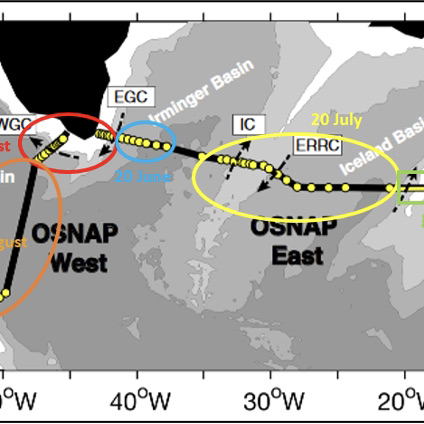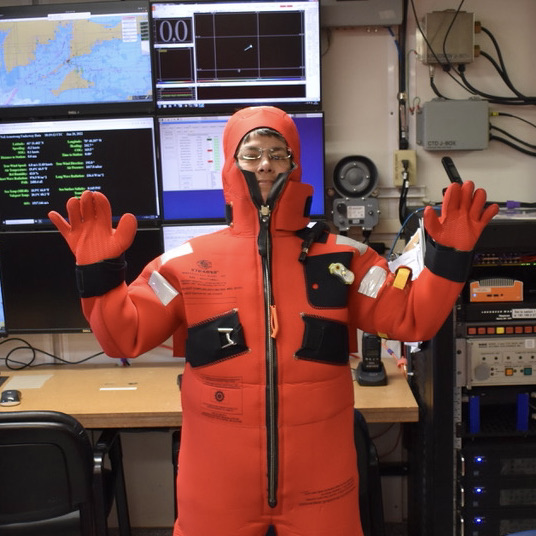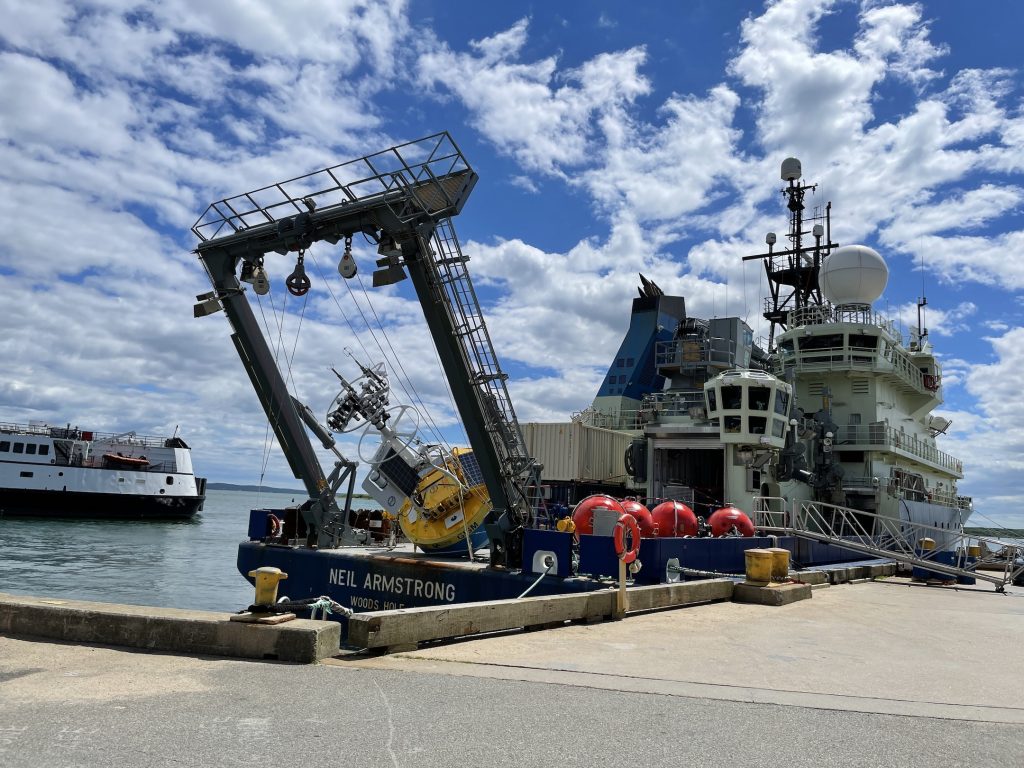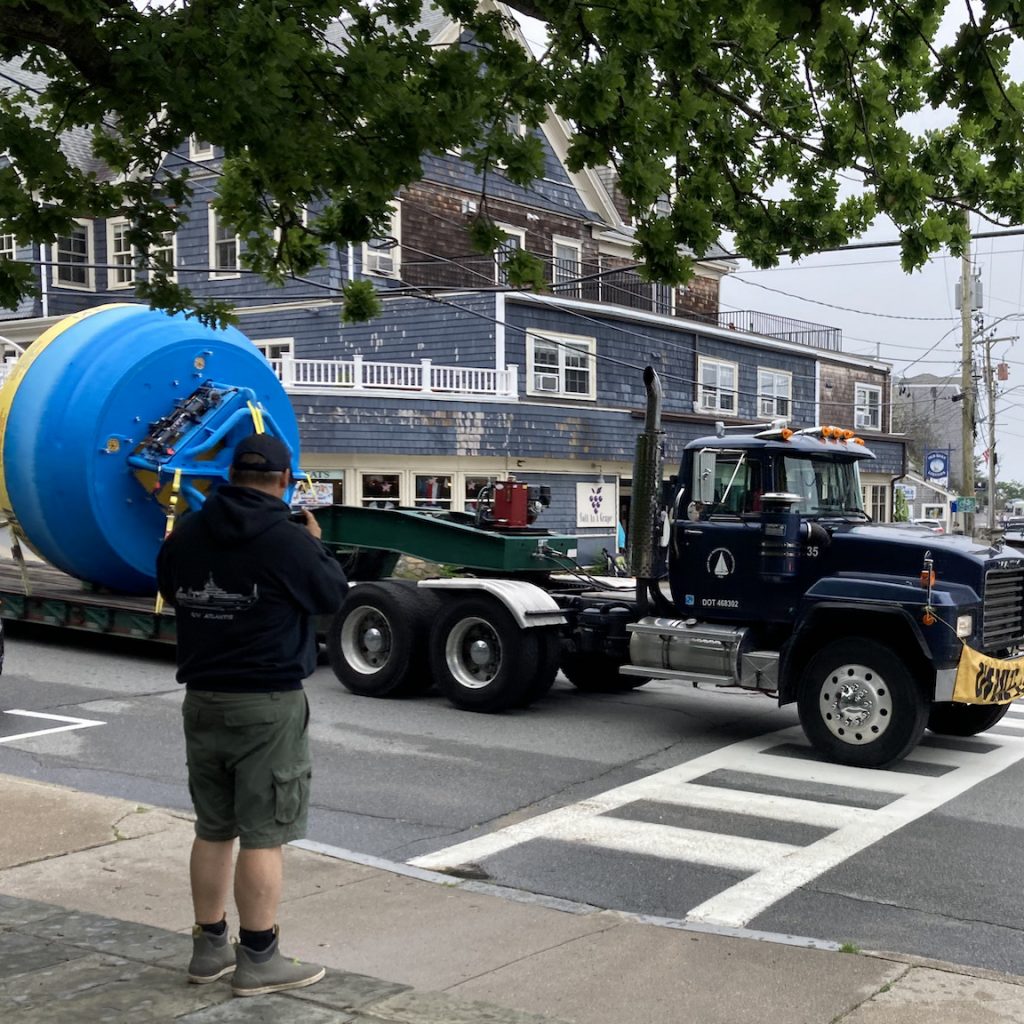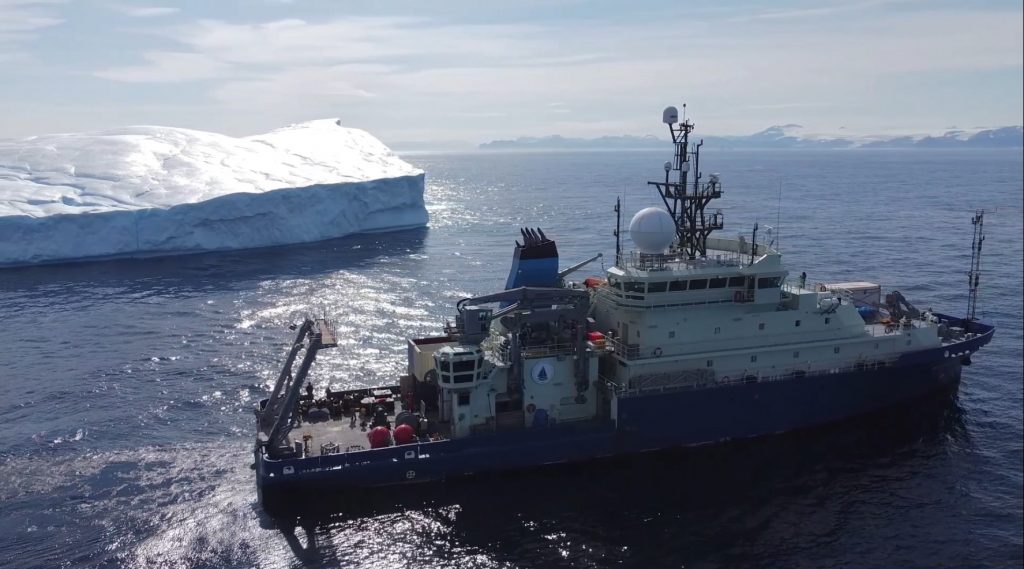Irminger 9
Link to OSNAP blog
A team from OSNAP (Overturning in the Subpolar North Atlantic Program) is also onboard the Armstrong, working alongside OOI colleagues. The OSNAP team is conducting sampling and checking OSNAP moorings in the region. In her first blog post, OSNAP researcher Heather Furey provides an overview of their mission over the next month and explains how…
Read MoreSurvival suits
All UNOLS (University-National Oceanographic Laboratory System) ships have safety briefings and drills with the science party to ensure that everyone is prepared for emergencies at sea. This includes practicing donning immersion suits in the event that the team would have to abandon ship in the cold north Atlantic waters. One should be able to get…
Read MoreChanging conditions
During our transit we are periodically stopping to conduct CTD casts in the Labrador Sea. We use these casts to test components and instruments that we will be deploying on the moorings in the Irminger Sea. We lower the CTD rosette to 3000 m depth to ensure components will work at that temperature and pressure,…
Read MoreSplicing operation
The Surface Mooring consists of a surface buoy, a seafloor anchor, and a mooring riser connecting the two. The riser is made up of numerous sections of wire rope, instrumentation frames and synthetic rope. As the team transits to the Irminger Sea Array, the mooring operations team is splicing together sections of the synthetic rope.
Read MoreBig Eyes
Pete Duley, from the National Oceanographic and Atmospheric Administration (NOAA), is aboard as a marine mammal observer. As we transit up the coast of Canada towards the Irminger Sea, Pete is spending his time on deck with the “Big Eyes” binoculars scanning the ocean. So far he has seen a variety of marine life –…
Read MoreMonth-long expedition
The R/V Neil Armstrong, operated by the Woods Hole Oceanographic Institution, is loaded and ready for departure for a month-long expedition that includes an eight-day transit to the Irminger Sea mooring array site off the tip of Greenland. The team will recover and deploy four moorings and three gliders over the next two and a…
Read MoreSurface mooring ready
Deck Ops Lead Chris Basque secures the Irminger Surface Mooring as loading of the R/V Neil Armstrong continues for this year’s trip north to recover moorings and swap OSNAP moorings.
Read MoreMobilization begins
The surface mooring of the Global Irminger Sea Array was tipped and loaded onto a flatbed truck for its trip down narrow, winding roads to the dock in Woods Hole village. The operation was completed in the morning to avoid tourist traffic. The mooring and other equipment will begin to be loaded on the R/V…
Read MoreR/V Neil Armstrong
The R/V Neil Armstrong is a state-of-the-art oceangoing research vessel. The ship is 238 feet long, can sustain speeds of 10 knots, has a range of 11,500 nautical miles, and can remain at sea for up to 40 days. Named for the American hero whose “small step” provided humanity with a new perspective on our planet, this vessel carries on its namesake’s legacy of exploration.
Read More